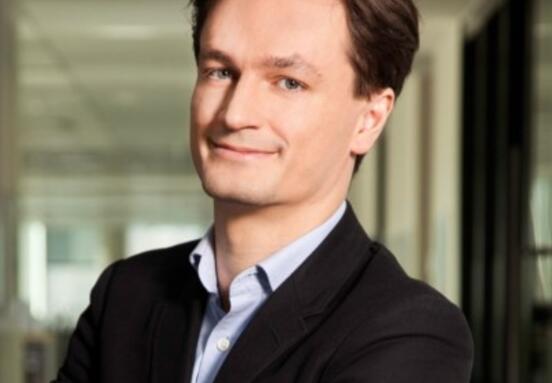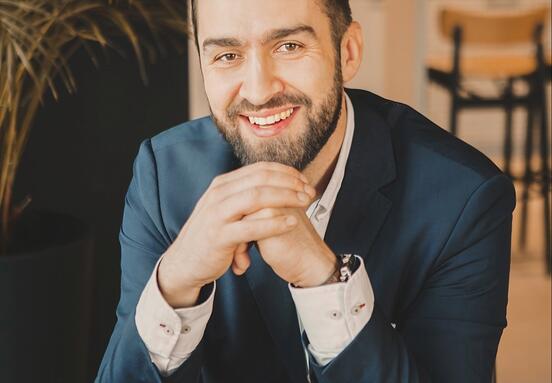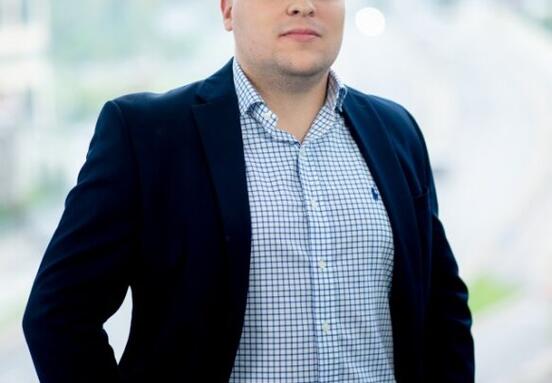Offices, logistics and tax relief
The city’s priority is to build up a modern business service sector. Already, over 26,000 people are employed in the city’s BPO, R&D, SSC, GBS and IT centres and the market continues to grow. Over the coming months, a further 1,700 jobs are to be added to the market. Due to the city's central location in Poland and its well-developed infrastructure, the city and its surrounding make a natural home for production and logistics facilities. Łódź and its region have the third-largest warehousing market in Poland. Investors can count on exemptions for their personal and corporate income tax within the Łódź Special Economic Zone and also on public support for new investment and for creating new jobs. Large companies investing in the Łódź region can expect public support equivalent to 35% of their investment costs or two years of their labour costs.
Not all investment and development plans are in the hands of the city. That is the case with the CPK (Solidarity Transport Hub) airport to be built in Mszczonów. “I support the construction of CPK and I’m crossing my fingers that this idea will be realised, although I don’t really believe it,” said Hanna Zdanowska. “For Łódź, this would be a step bringing us closer to Warsaw and creating a true duopolis. It would be another big boost for the city’s development,” added the Łódź mayor.
A city looking to grow but not sprawl
The city of Łódź is currently working on its 2030+ strategy. Demography is one of the most important factors that will shape the city’s future over the long term and there’s no escaping the trend. The city’s population has gone down by over 150,000 over the last 30 years. “In reality, we try to estimate the size of the population using different methods from how many mobile phones are logged on to a network to looking at water use. Official statistics don't tell the entire story. From our calculations, about 750,000 people are living in Łódź," says Hanna Zdanowska and she adds that some estimates are that the population will fall to as low as 550,000 people by 2050. The city was, however, able to reverse the harmful trend of young people leaving, who had previously sought their fortunes in other cities or in Western Europe. “When it comes to the young between 18 and 28, we have more people coming in and there are definitely more who settle in Łódź than leave,” points out the mayor. Several thousand people have also settled in the city from beyond Poland's eastern borders and this has certainly had a positive effect on the city's housing market including its rental market. According to city data, currently, there are 120 residential projects under various stages of development, which include around 11,000 apartments. The city, however, is not so pleased by development projects in every district. For the next three years, the city's planning policy has three basic goals: To lay out areas for logistics and industry, as well as areas within the city for historic conservation, to regulate the city’s growth reducing the harmful effects of uncontrolled construction and to continue to draw up plans for the city that will allow for the redevelopment and modernisation of the centre.
The transformation of the city is intended to make maximum use of the land and the standard is to be that it will be a place to live and work and a place where you can spend your time in Nowe Centrum Łodzi and its surroundings, the new heart of the city. New green areas, including parks, squares and tree-lined streets will play an important role, as will develop environmentally friendly public transportation. All of this is to be governed by urban plans. So far, the 28.03% of the city is covered by a plan, but as the city’s mayor states, “That’s around ten times more than a decade ago.”
New centre, towers and parks
The city’s flagship investment project is Nowe Centrum Łodzi. This is a site of around 100 ha, which the city regained as building land as a result of moving a railway line underground. It also covers an area that requires modernisation. This is where the new heart of the city is to beat. But it has not a straight path. A few years ago, it became necessary to revise the original plans that had been made several years before and it turns out that further alterations to the NCŁ concept are needed. One of the biggest changes will be to reduce the area taken up by offices. Łódź currently has an office vacancy rate of around 16% (the highest among Poland’s large cities) so the changes will increase the amount of land for residential and other related uses. “We can see a lot of demand for apartments in central Łódź and we’re going to meet it. As a result, we have busied ourselves with changing the spatial development plans to make room for these kinds of projects on the site in an area that had formerly meant to be dominated by offices," Hanna Zdanowska informs us.
“Urban areas normally require a long-term action plan to develop sustainably. The city's development models mainly concentrate on the ecology and the environment of the area that is to be transformed, as well as raising the quality of life of the people. In such cases, one tool we use is to fill the gaps in the existing street fronts with the city taking back sites that had been used for other purposes. The construction of Nowe Centrum Łodzi is part of this trend. The land that was freed up by moving the railway line and the Łódź Fabryczna station underground is to be turned into a new area of the city and it could well turn Łódź into one of the best-planned cities in Europe. What is important is that Łódź is a flexible city and that it changes its plans when needs require for the benefit of its residents,” says Dorota Wysokińska-Kuzdra, senior partner at Colliers, the chair of ULI Poland and member of the ULI Europe Executive Committee.
The Łódź civil service also wants to play its part. It intends to include the construction of a town hall in the plans for the new Kobro market square. The building is to be constructed as a PPP. “We have the project. Currently, we are in the process of selecting an investment partner," announces the mayor of Łódź. The city is also planning to use PPPs to build car parks and social housing projects. Old townhouses are to be emptied and handed over to investors and the former residents offered apartments for rent in the new buildings. “We’ve started talking to investors. To begin with we intend to build 500 -700 new apartments. The number of companies that have declared their interest in the project has been impressive and five have gone through to the second stage of the selection, although one has pulled out. If this tender procedure is successful, the programme could eventually encompass even up to 2,000 apartments,” says the mayor. “Another project in which we want to engage private capital is to modernise the factory worker homes built by Izrael Poznański. This will be one of the biggest projects on ul. Ogrodowa, second only to the Manufaktura centre. We are going to include almost every way of using space that is known in the commercial market. In March, the city of Łódź announced a tender to renovate and convert three famułas . Three worker buildings have a total useable area of 30,000 sqm. The project will also cover land that can be used to build a multi-storey car park. We plan to finish negotiating for a partner this year and then we will start renovations,” announces Hanna Zdanowska.
The local authorities do not hide the fact that they want to conserve and continue with the architectural style of the current buildings, but this does not mean that they have banned tall modern buildings. NCŁ is the area where such construction is to be allowed as well as along the central segment of the W-Z road between al. Kościuszki and the Nowokonstytucyjna road. Buildings will be allowed of over 50m in height. But how tall will that be? “Along the W-Z, buildings may be built of up to 87m and in NCŁ they can be around 70m tall. The final height will be laid out by the spatial development plans. In my opinion, it’s worthwhile sticking to the scale of the current buildings in Łódź, which despite not having a very tall skyline, is architecturally a very beautiful city,” points out Hanna Zdanowska.
Łódź is also investing in its green areas. The city has budgeted EUR 17 million for the 2018-2020 period to be invested in the Sienkiewicz and Moniuszka parks. For the 2021-2023 budgetary period renovations will also begin on Staromiejski Park (PLN 18 million), Helenów Park (PLN 6.2 million) and Legionów Park (PLN 4 million). Together this expenditure comes to over PLN 28 million. The city is also investing in low-emission mass transport and the facilities to support it, including a cross-city tunnel, an efficient public transport system, city bikes and car-sharing. “These are becoming means of transport that are attractive as alternatives to people driving their own private cars,” claims Hanna Zdanowska, who became an ambassador of the city to the European Covenant of Mayors for Climate and Energy, an organisation founded in 2008, which includes 10,000 self-governing cities in 61 countries. The Covenant supports the European Climate Pact in its goal to achieve climate neutrality by 2050.








